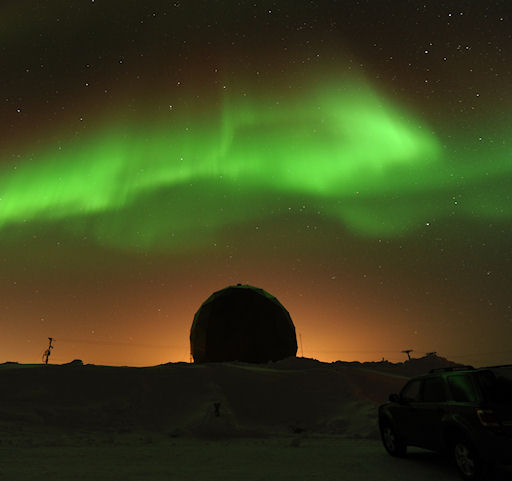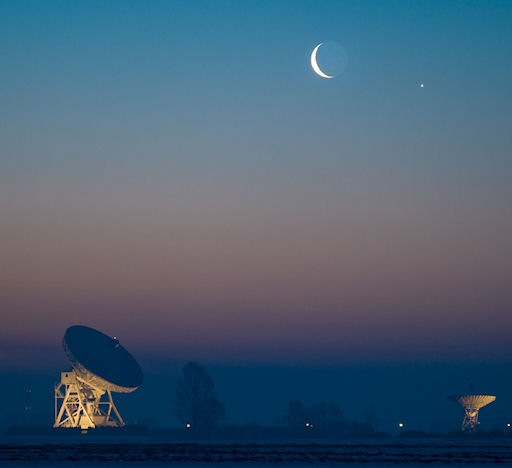Metallic photos of the sun by renowned photographer Greg Piepol bring together the best of art and science. Buy one or a whole set. They make a stellar gift. | | |
WHAT'S HITTING EARTH? Have you ever seen a fireball streak through the night sky and gone to bed wondering, "What was that?" NASA is deploying a network of smart cameras that will have an answer waiting for you when you wake up. Get the full story from Science@NASA.
MAGNETIC STORM IN PROGRESS: A solar wind stream hit Earth's magnetic field during the early hours of March 1st. The impact sparked a geomagnetic storm that was, at first, minor, but the storm has been intensifying throughout the day. Spotters are now reporting auroras over Northern Ireland, Latvia, Norway, and Sweden. If trends continue, the display could spread to the high latitudes of North America after nightfall. Stay tuned! [Aurora alerts: phone, text]
NASA space physicist James Spann sends this picture from Poker Flat, Alaska, where he is attending a scientific conference to study auroras:

"This is the first time I have seen the aurora borealis in person," says Spann who lives in Alabama. "It was fantastic--the greatest light show on Earth. It was cold (<-20 F) outside but worth every minute of exposure and lost sleep. I am afraid now that I have been ruined for life since my first personal viewing of the aurora was so amazing."
As a researcher he also appreciated the greater meaning of the display: "This is the most obvious and accessible evidence of the connectivity that Earth has with our star the sun. Witnessing the connectivity first-hand was particularly special to me."
more images: from Paul Evans of Larne, Northern Ireland; from Janis Satrovskis of Burtnieki, Latvia; from Markus Tingsnäs of Rättvik, Sweden; from Greger Lissollas of Rättvik, Sweden; from B.Art Braafhart of Salla in the Finnish Lapland; from Michael Jones of Anchorage Alaska;
GOOD WAY TO BEGIN A MONTH: When dawn broke on March 1st, early risers witnessed a spectacular sight in the eastern sky. Venus and the cresent Moon were in conjunction:

"What a great way to begin the day--and the month," says Piotr Majewski, who sends this picture from the Nicolas Copernicus Astronomy Centre near Torun, Poland.
If you overslept and missed the show, there's good news. A similar meetup between the crescent Moon and Jupiter (nearly as bright as Venus) will occur in the evening sky on March 6th. Sign up for backyard astronomy alerts, and we'll remind you too look.
more images: from KamilaM of Pulawy, Poland; from Adrian New of San Antonio, Texas; from Louis Suarato of Albany, NY; from Tomasz Adam of Kraków, Poland
NanoSail-D Photo Gallery
[NASA: Solar Sail Stunner] [Photo Contest]
February 2011 Aurora Photo Gallery
[previous Februaries: 2010, 2009, 2008, 2007, 2006, 2004, 2003, 2002]

